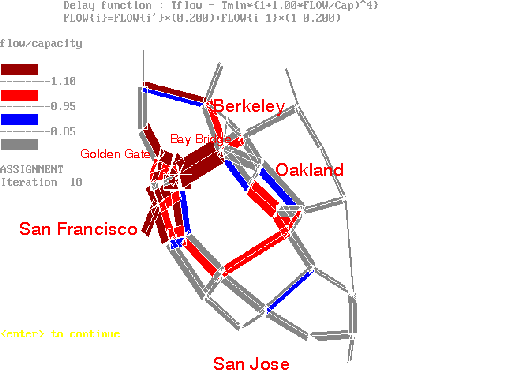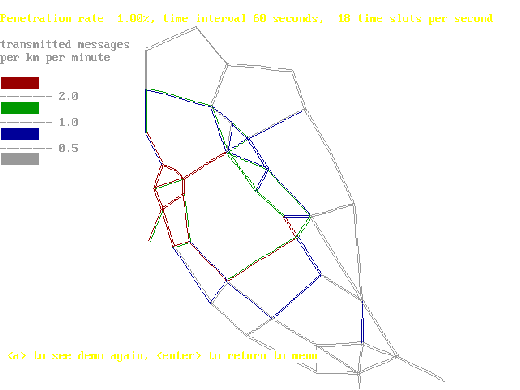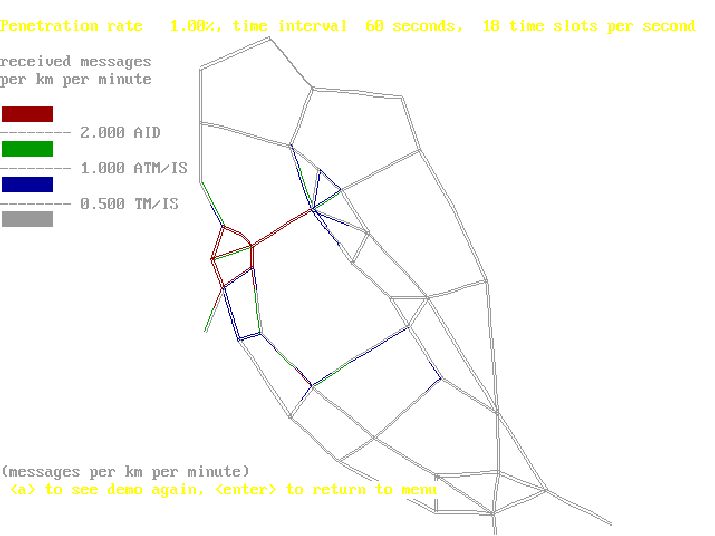
 |
JPL's Wireless Communication Reference WebsiteChapter: Network Concepts and Standards
|
 |
|
PROMOT Screen Dump: Estimated morning-rush road traffic intensity in San Francisco Bay Area |
 |
|
PROMOT Screen Dump: Intensity of messages transmitted by probe vehicles in San Francisco Bay Area. Penetration of vehicle with probe facility 1% One transmission per probe vehicle every 60 sec. |

|
| PROMOT Screen Dump: Throughput of common ALOHA channel with 4 base stations. Base station location indicated with white circles Probe vehicle penetration 1%, One transmission per probe vehicle every 60 sec. 18 time slots per second available. |
You may want to compare the cell coverage predicted by PROMOT with a real-world cellular coverage map of the Pacific Bell PCS 1900 system. It shows that a base station located in San Francisco downtown has approximately the same coverage as illustrated by the circle in the above map.